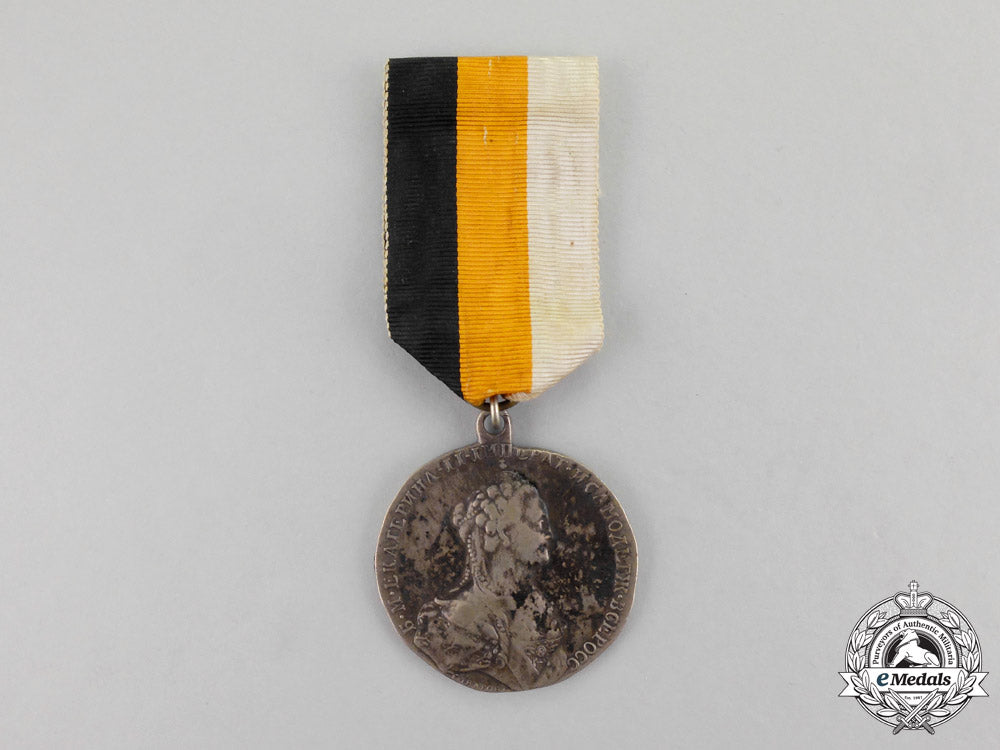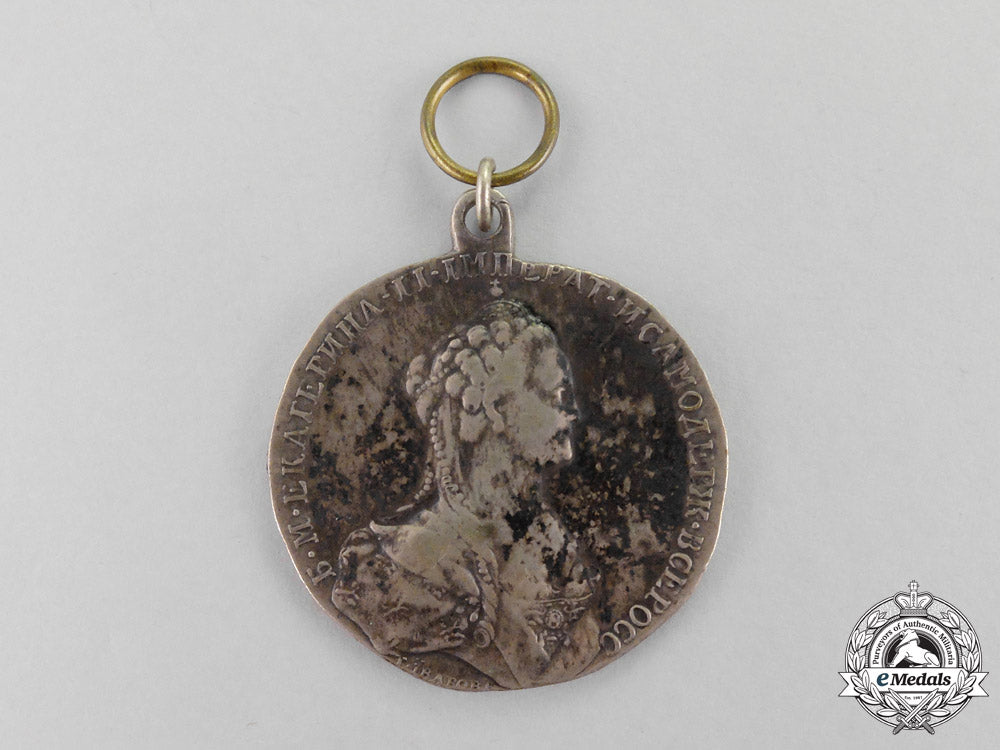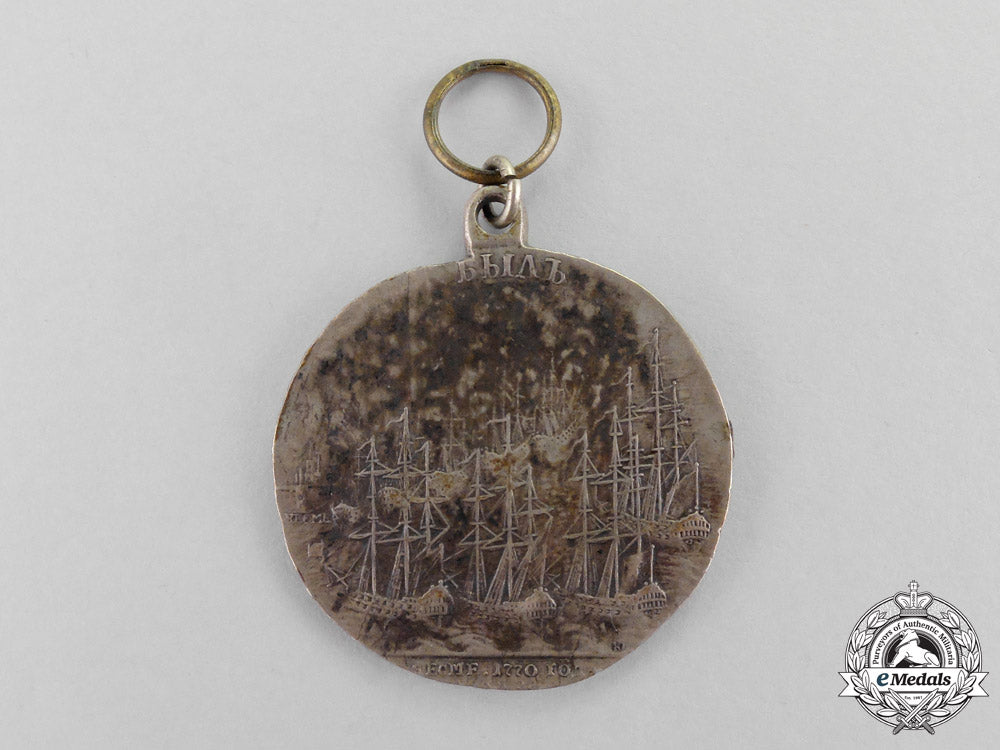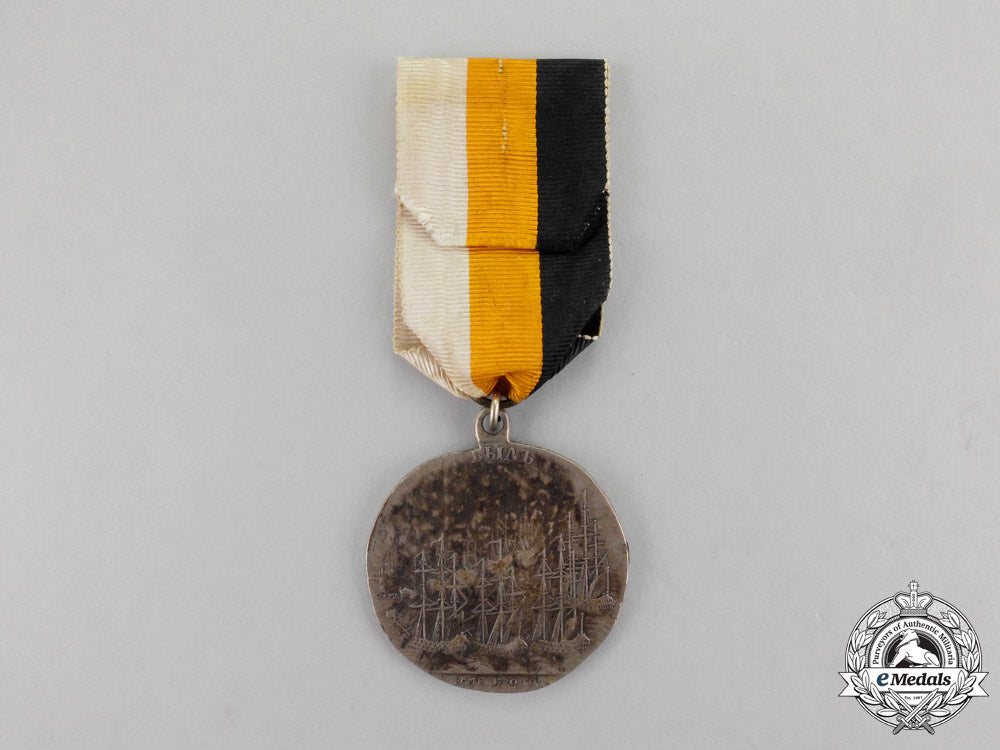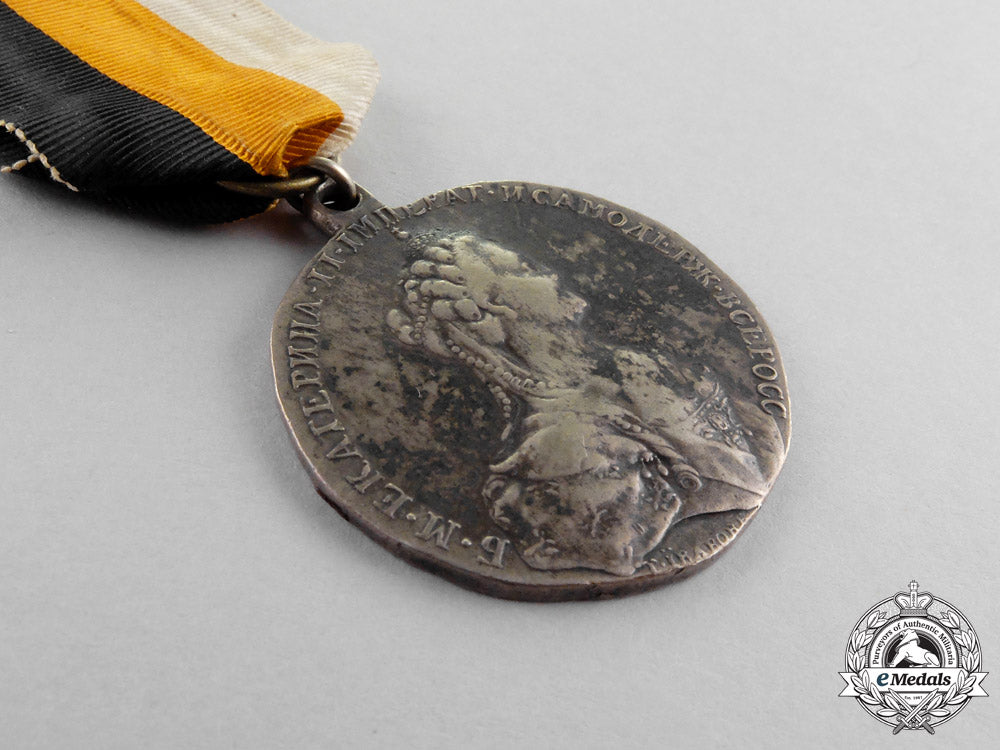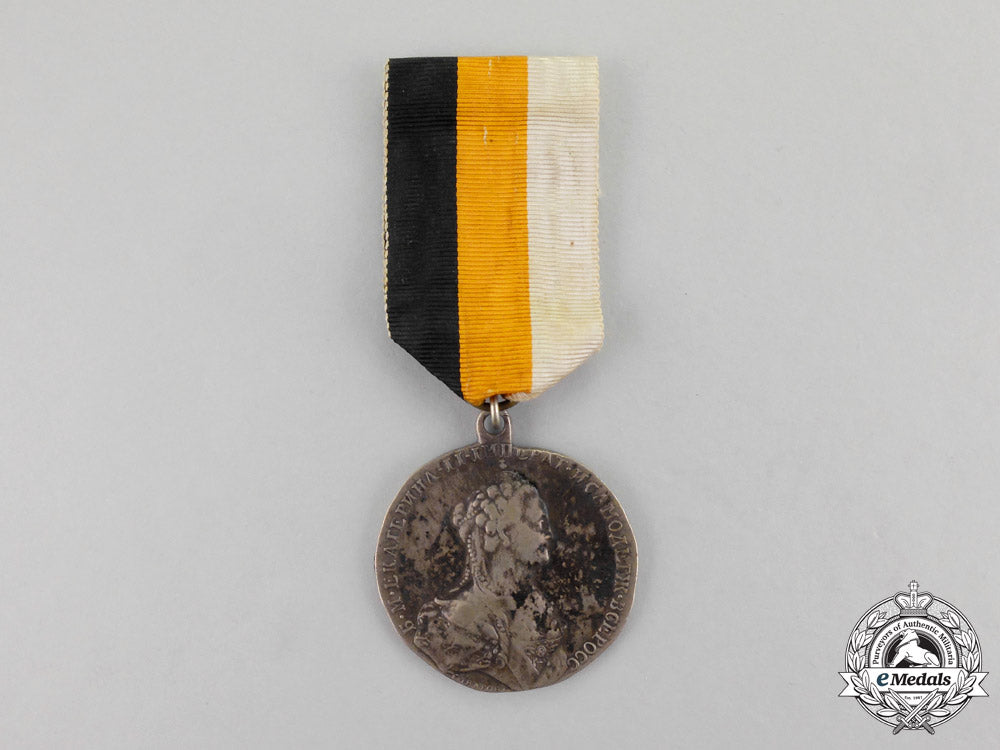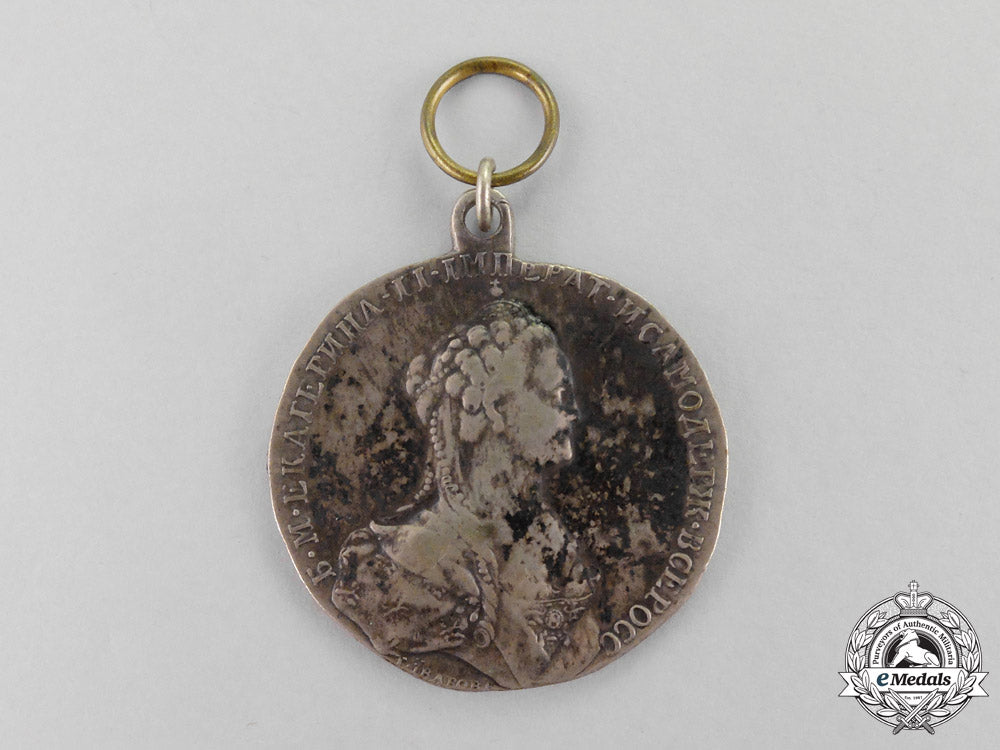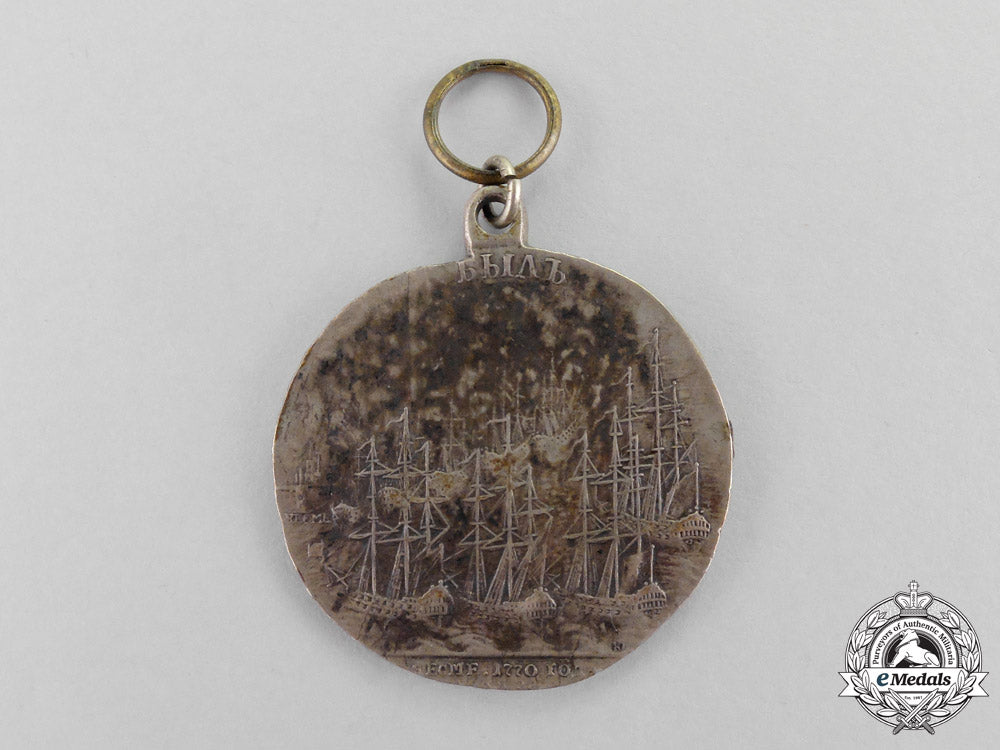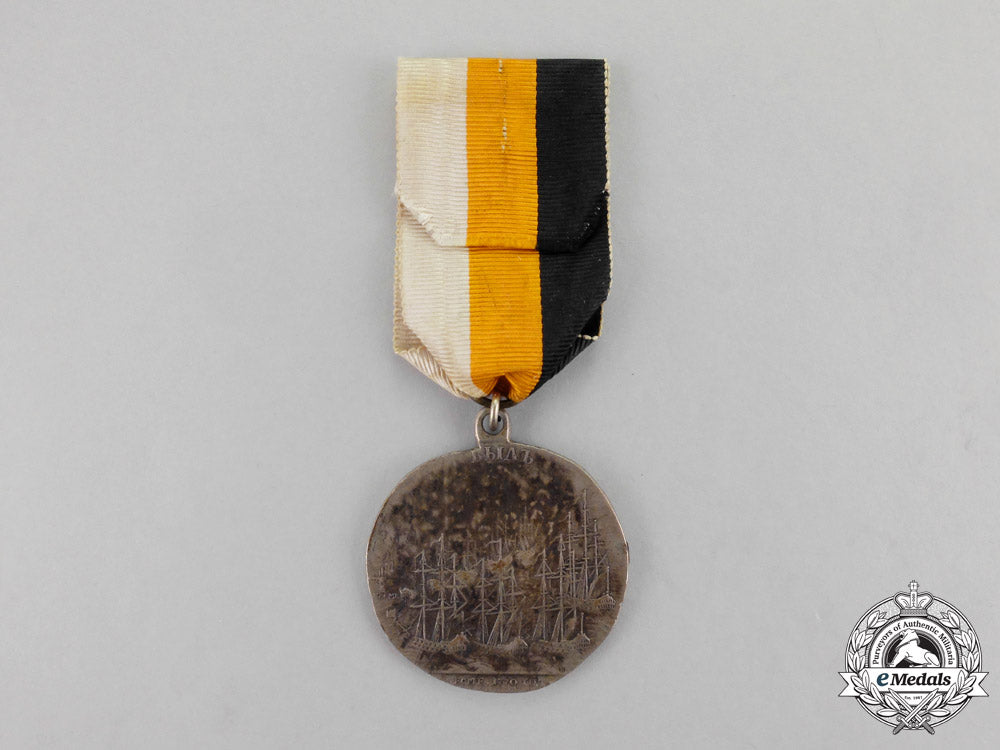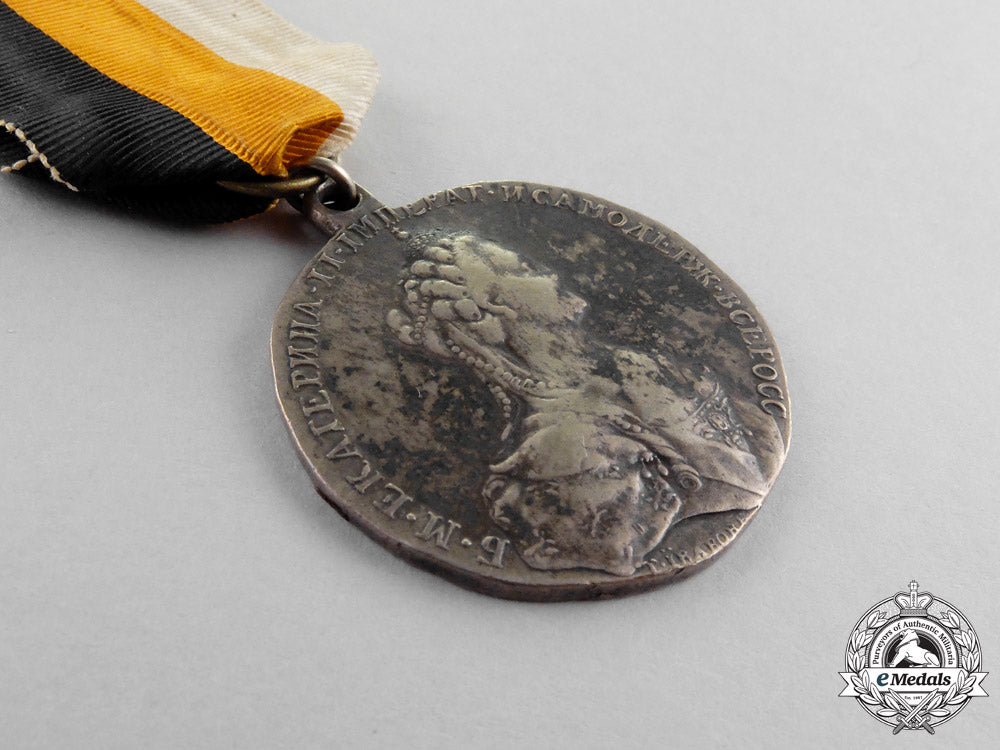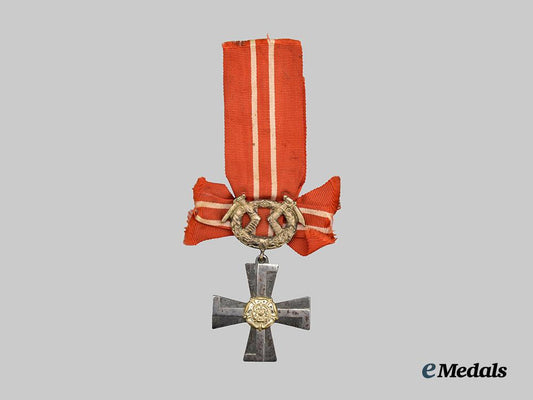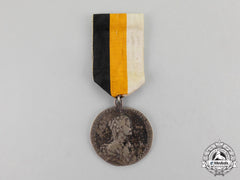
LOADING ...
In response to evolving domestic opinion, eMedals Inc has made the conscious decision to remove the presentation of German Third Reich historical artifacts from our online catalogue. For three decades, eMedals Inc has made an effort to preserve history in all its forms. As historians and researchers, we have managed sensitive articles and materials with the greatest of care and respect for their past and present social context. We acknowledge the growing sentiments put forth by the Canadian public and have taken proactive actions to address this opinion.
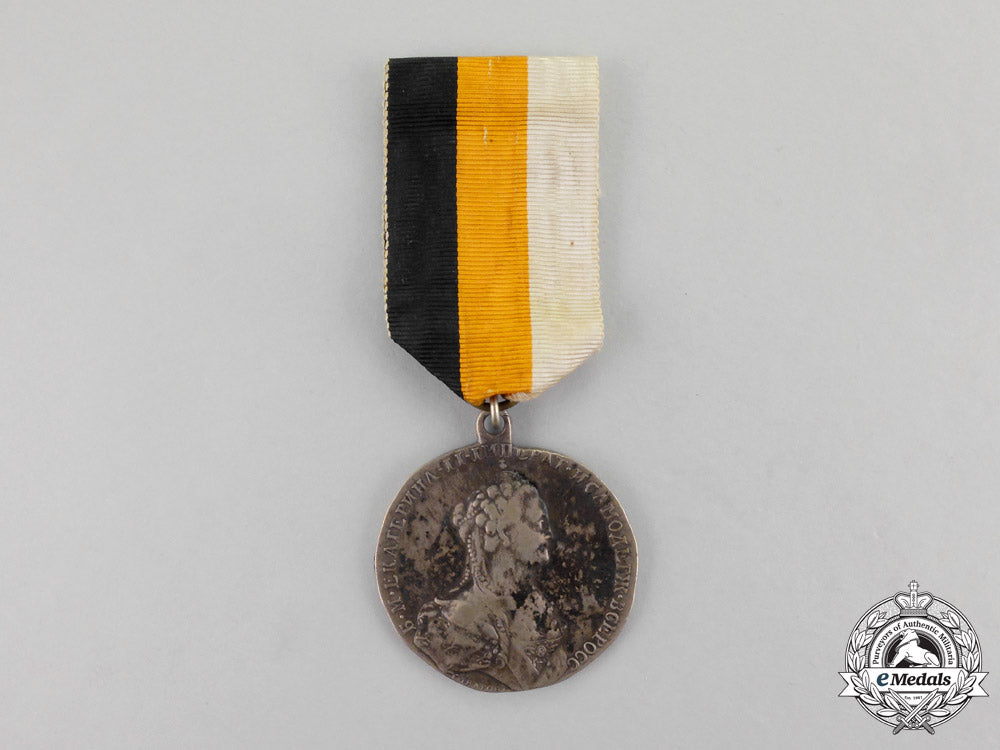
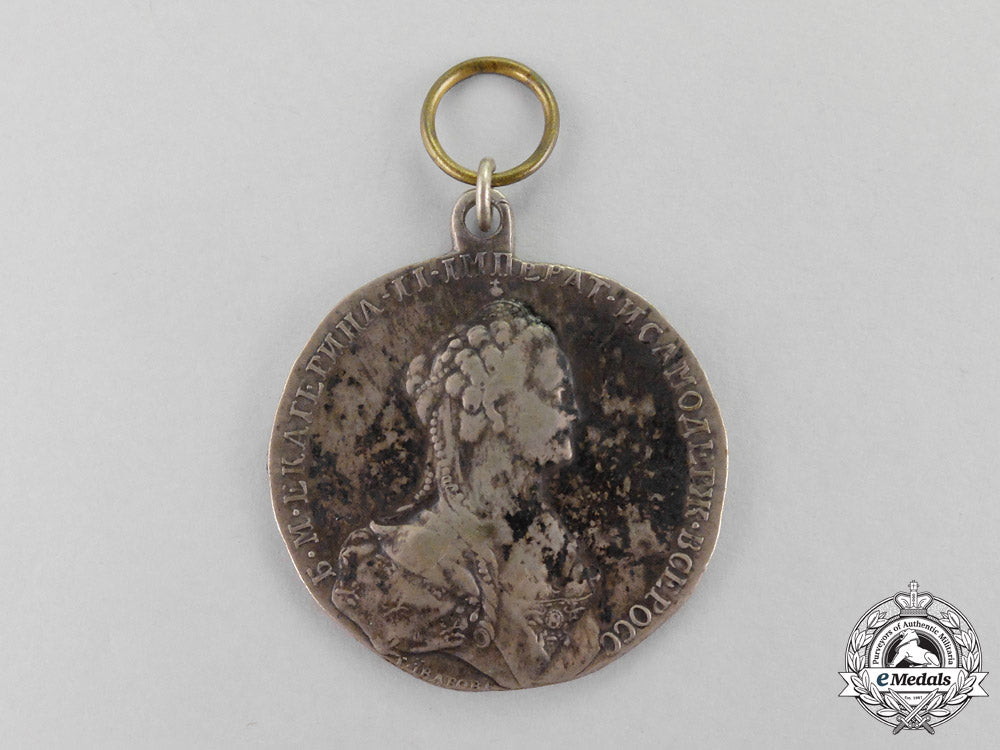
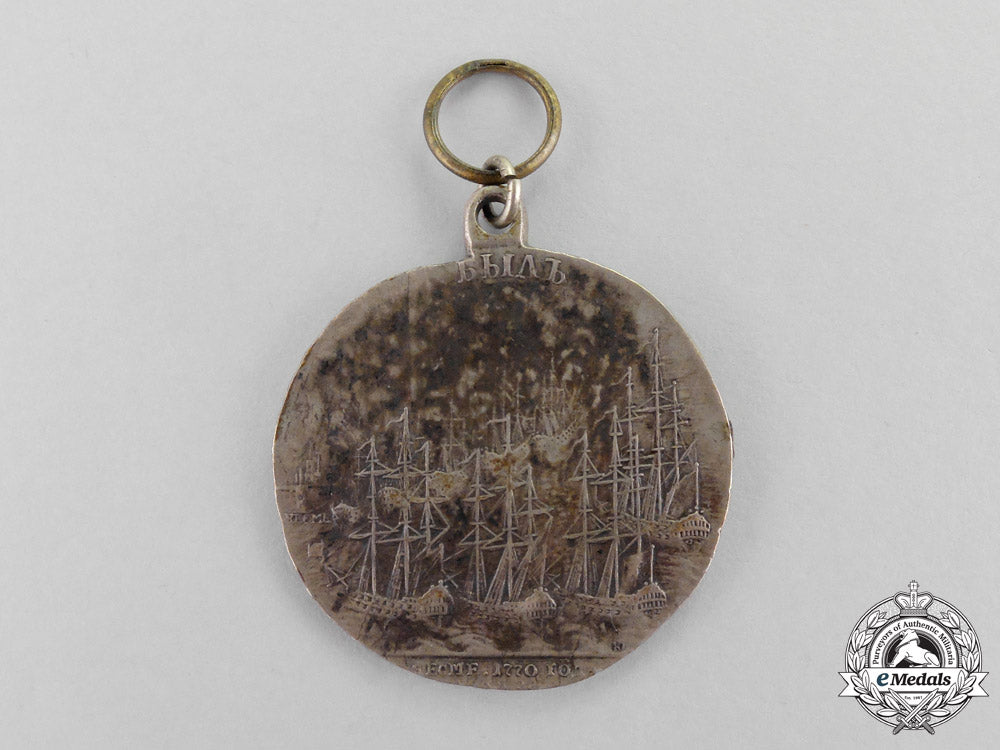
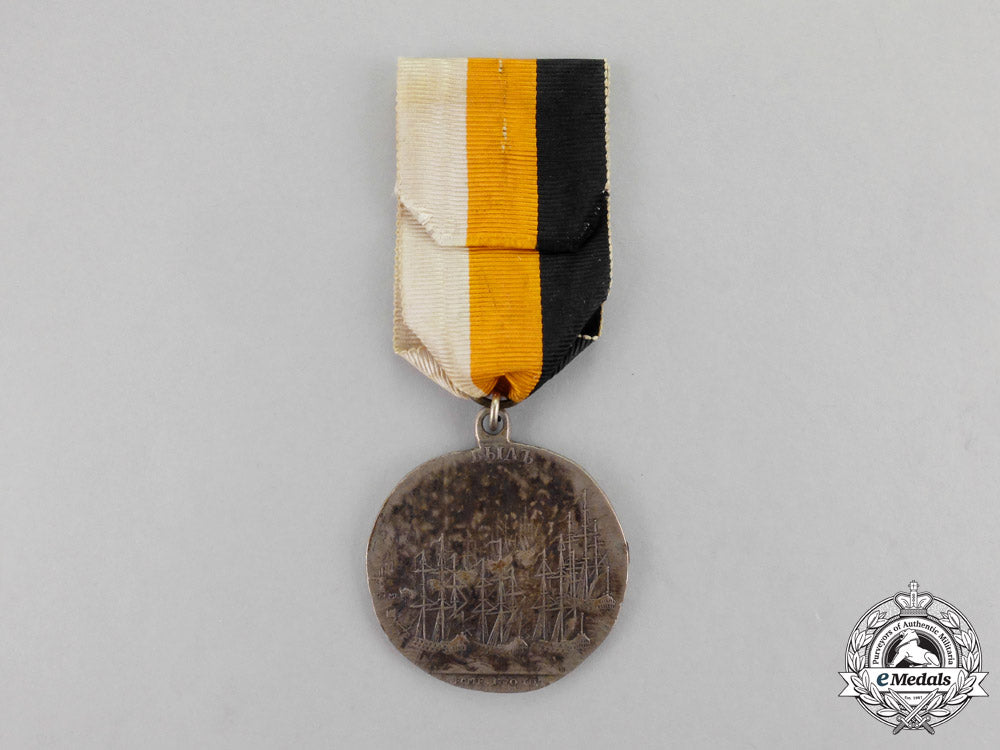
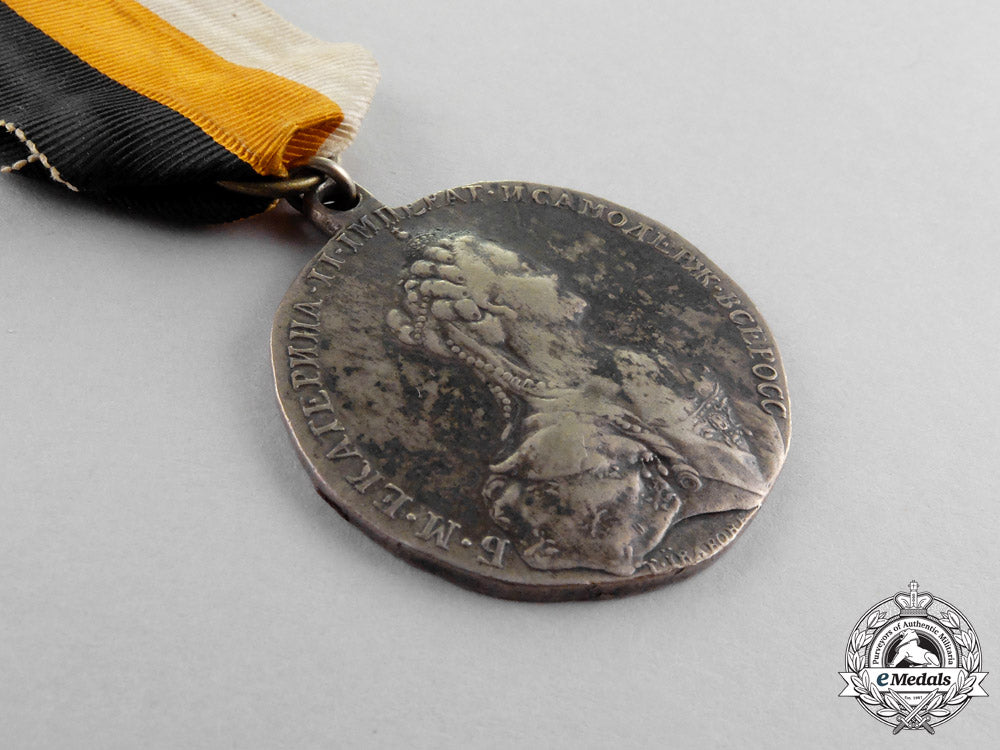
Imperial Russia. A Rare 1770 Medal For The Victory Of Chesme (Tchesme) Bay
Imperial Russia. A Rare 1770 Medal For The Victory Of Chesme (Tchesme) Bay
SKU: ITEM: EG1479
Current Bid:
Your Max Bid:
Bid History:
Time Remaining:
Couldn't load pickup availability
Shipping Details
Shipping Details
eMedals offers rapid domestic and international shipping. Orders received prior to 12:00pm (EST) will be shipped on the same business day.* Orders placed on Canadian Federal holidays will be dispatched the subsequent business day. Courier tracking numbers are provided for all shipments. All items purchased from eMedals can be returned for a full monetary refund or merchandise credit, providing the criteria presented in our Terms & Conditions are met. *Please note that the addition of a COA may impact dispatch time.
Shipping Details
eMedals offers rapid domestic and international shipping. Orders received prior to 12:00pm (EST) will be shipped on the same business day.* Orders placed on Canadian Federal holidays will be dispatched the subsequent business day. Courier tracking numbers are provided for all shipments. All items purchased from eMedals can be returned for a full monetary refund or merchandise credit, providing the criteria presented in our Terms & Conditions are met. *Please note that the addition of a COA may impact dispatch time.
Description
Description
"In silver, obverse illustrating the right-facing bust of Catherine II (Catherine the Great) and is engraver marked below bust, reverse illustrating the Russian fleet attacking the Turkish fleet, which is in flames, during the Battle of Chesme and inscribed in Russian ""Tchesme 1770"" below, measuring 38.7 mm (w) x 42.5 mm (h), with old ribbon, surface wear, fair.
Footnote: The naval Battle of Chesme (Tchesme) took place on July 5-7, 1770 near and in Çeşme (Chesme or Chesma) Bay, in the area between the western tip of Anatolia and the island of Chios in Turkey, which was the site of a number of past naval battles between the Ottoman Empire and the Republic of Venice. It was a part of the Orlov Revolt of 1769, a precursor to the later Greek War of Independence (1821-1829), and the first of a number of disastrous fleet battles for the Ottomans against Russia. The Russo-Turkish War had begun in 1768, and Russia sent several squadrons from the Baltic Sea to the Mediterranean Sea to draw Ottoman attention away from their Black Sea fleet, then only six battleships (ships of the line) strong. Two Russian squadrons, commanded by Admiral Grigory Spiridov and Rear Admiral John Elphinstone, a British adviser, combined under the overall command of Count Alexei Orlov, Commander-in-Chief of the Russian Fleet, and went to look for the Ottoman fleet. On July 5, 1770, they came across it anchored in line just north of Çeşme Bay, western Anatolia. Details of the Ottoman fleet are uncertain, but it included fourteen to sixteen ships of the line including Real Mustafa of 84 guns, Rodos of 60 guns and a 100-gun flagship. In addition, there were perhaps six frigates, 6 xebecs, 13 galleys and 32 small craft, with about 1,300 guns in total. About 10 of the ships of the line, of 70 to100 guns, were in the Ottoman main line with a further 6 or so ships of the line in the second, arranged so that they could fire through the gaps in the first line. Behind that were the frigates, xebecs, etc. The fleet was commanded by Kapudan Pasha Mandalzade Hüsameddin, in the fourth ship from the front (north end) of the line, with Hasan Pasha in the first ship, Real Mustafa, and Cafer Bey in the seventh. Two further ships of the line, probably small, had left this fleet for Mytilene the previous evening. After settling a plan of attack, the Russian battle line sailed towards the south end of the Ottoman line and then turned north, coming alongside the Ottomans, with the tail end coming into action last (Elphinstone had wanted to approach the northern end first, then follow the wind along the Ottoman line, attacking their ships one by one: the method used by Nelson at the Battle of the Nile in 1798). The Ottomans opened fire at about 11:45 a.m., followed by the Russians slightly later. Three of the Russian ships of the line had trouble staying in position; Evropa turned around and came back behind Rostislav, Tri Svyatitelya circled the second Ottoman vessel before coming back into the Russian line, being attacked in error by Tri Ierarcha as she did so, and Sv. Ianuarii turned around before coming back into the line. Spiridov, in Sv. Evstafii, had a close-range battle with Hasan Pasha in Real Mustafa, before the latter was suddenly seen to be on fire. Her mainmast came down and landed on Sv. Evstafiis deck, causing the Russian ship to blow up immediately. Shortly thereafter, Real Mustafablew up as well. According to Elphinstone, who claimed the Russians were almost useless, Spiridov and Count Feodor Orlov (brother of the commander), had left Sv. Evstafii before the fighting became close-range. Spiridov ended up on Tri Svyatitelya. Sv. Evstafii's captain, Kruse, survived too. At about 2:00 p.m. the fighting ended, as the Ottomans cut their cables and moved south into the bay, forming themselves into a defensive line of eight ships of the line, a second line, and the rest beyond. On July 6th, the Russians bombarded the Ottoman ships and land positions. At about 12:30 a.m. on the morning of 7 July, Orlov sent Samuel Greig (who transferred to Rostislav) to attack with Evropa, Rostislav and Ne tron menya forming a south-north line facing the Ottomans, and with Saratov in reserve, Nadezhda attacking the batteries at the eastern side of the bay entrance, Afrika attacking the batteries on the western side, and Grom near Afrika. At about 1:30 a.m. or earlier (times were about ninety minutes earlier, according to Elphinstone), fire from Grom and/or Ne tron menya caused an Ottoman ship of the line to blow up after her main topsail caught fire, and the fire quickly spread to other ships of the line. By 2 a.m., two Ottoman ships of the line had blown up and more were on fire, and Greig sent in three fireships (the fourth, seeing the danger, stayed out), which contributed in a small way to the burning of almost the entire Ottoman fleet. At about 4 a.m., boats were sent in to save two ships of the line which were not burning, but one of these caught fire while it was being towed. The other, Rodos60, survived and was captured along with five galleys. Fighting ended at about 8 a.m.. Russian casualties on July 5th were 14 killed, plus 636 killed in Sv. Evstafii, and about 30 wounded, and on July 7th, 11 killed. Ottoman casualties were much higher. Hüsameddin, Hasan Pasha and Cafer Bey survived. Hüsameddin was removed from his position, which was given to Cafer Bey. This was the only significant fleet battle during the Russo-Turkish War. The Battle of Chesma was fought on the same day as the land Battle of Larga. It was the greatest naval defeat suffered by Ottomans since the Battle of Lepanto (1571). This battle inspired great confidence in the Russian fleet and allowed the Russians to control the Aegean Sea for some time. The defeat of the Ottoman fleet also speeded up rebellions by minority groups in the Ottoman Empire, especially the Orthodox Christian nations in the Balkan peninsula, who helped the Russian army in defeating the Ottoman Empire. After this naval victory, the Russian fleet stayed in the Aegean for the following five years. It returned to Çeşme twice more during this time to bombard it. Historians still debate the rationale for the Russian military focus on this small fort town while there were many other more strategic targets along the Aegean coast. The medal itself was awarded to all Naval officers who participated in the Naval Battle of Chesme (Tchesme). In order to wear the medal, the recipient had to add a loop/ring. Catherine the Great commissioned four monuments to commemorate the victory: Chesma Palace and Church of Saint John at Chesme Palace in St Petersburg (1774-1777), Chesma Obelisk in Gatchina (1775), and Chesma Column in Tsarskoe Selo (1778). "
This offering is a part of the "Dr. Albert Goodwin Collection", a preeminent assemblage of world Orders, Medals, and Decorations composed solely by Dr.Goodwin between 1946-1967. Dr. Goodwin had a successful career as an educator and prominent physician in New York as well as actively serving in both World Wars with the United States Medical Corps. He acted as both President and Vice-President of the Orders and Medals Society of America (OMSA) and is responsible for organizing their first convention in 1960. He maintained further membership with the American Society of Military Collectors, the International Orders Research Society, and the American Numismatic Society. His knowledge and passion for history and awards is evident in this meticulously compiled collection that is now available in its entirety for the first time exclusively on eMedals.com.
Description
"In silver, obverse illustrating the right-facing bust of Catherine II (Catherine the Great) and is engraver marked below bust, reverse illustrating the Russian fleet attacking the Turkish fleet, which is in flames, during the Battle of Chesme and inscribed in Russian ""Tchesme 1770"" below, measuring 38.7 mm (w) x 42.5 mm (h), with old ribbon, surface wear, fair.
Footnote: The naval Battle of Chesme (Tchesme) took place on July 5-7, 1770 near and in Çeşme (Chesme or Chesma) Bay, in the area between the western tip of Anatolia and the island of Chios in Turkey, which was the site of a number of past naval battles between the Ottoman Empire and the Republic of Venice. It was a part of the Orlov Revolt of 1769, a precursor to the later Greek War of Independence (1821-1829), and the first of a number of disastrous fleet battles for the Ottomans against Russia. The Russo-Turkish War had begun in 1768, and Russia sent several squadrons from the Baltic Sea to the Mediterranean Sea to draw Ottoman attention away from their Black Sea fleet, then only six battleships (ships of the line) strong. Two Russian squadrons, commanded by Admiral Grigory Spiridov and Rear Admiral John Elphinstone, a British adviser, combined under the overall command of Count Alexei Orlov, Commander-in-Chief of the Russian Fleet, and went to look for the Ottoman fleet. On July 5, 1770, they came across it anchored in line just north of Çeşme Bay, western Anatolia. Details of the Ottoman fleet are uncertain, but it included fourteen to sixteen ships of the line including Real Mustafa of 84 guns, Rodos of 60 guns and a 100-gun flagship. In addition, there were perhaps six frigates, 6 xebecs, 13 galleys and 32 small craft, with about 1,300 guns in total. About 10 of the ships of the line, of 70 to100 guns, were in the Ottoman main line with a further 6 or so ships of the line in the second, arranged so that they could fire through the gaps in the first line. Behind that were the frigates, xebecs, etc. The fleet was commanded by Kapudan Pasha Mandalzade Hüsameddin, in the fourth ship from the front (north end) of the line, with Hasan Pasha in the first ship, Real Mustafa, and Cafer Bey in the seventh. Two further ships of the line, probably small, had left this fleet for Mytilene the previous evening. After settling a plan of attack, the Russian battle line sailed towards the south end of the Ottoman line and then turned north, coming alongside the Ottomans, with the tail end coming into action last (Elphinstone had wanted to approach the northern end first, then follow the wind along the Ottoman line, attacking their ships one by one: the method used by Nelson at the Battle of the Nile in 1798). The Ottomans opened fire at about 11:45 a.m., followed by the Russians slightly later. Three of the Russian ships of the line had trouble staying in position; Evropa turned around and came back behind Rostislav, Tri Svyatitelya circled the second Ottoman vessel before coming back into the Russian line, being attacked in error by Tri Ierarcha as she did so, and Sv. Ianuarii turned around before coming back into the line. Spiridov, in Sv. Evstafii, had a close-range battle with Hasan Pasha in Real Mustafa, before the latter was suddenly seen to be on fire. Her mainmast came down and landed on Sv. Evstafiis deck, causing the Russian ship to blow up immediately. Shortly thereafter, Real Mustafablew up as well. According to Elphinstone, who claimed the Russians were almost useless, Spiridov and Count Feodor Orlov (brother of the commander), had left Sv. Evstafii before the fighting became close-range. Spiridov ended up on Tri Svyatitelya. Sv. Evstafii's captain, Kruse, survived too. At about 2:00 p.m. the fighting ended, as the Ottomans cut their cables and moved south into the bay, forming themselves into a defensive line of eight ships of the line, a second line, and the rest beyond. On July 6th, the Russians bombarded the Ottoman ships and land positions. At about 12:30 a.m. on the morning of 7 July, Orlov sent Samuel Greig (who transferred to Rostislav) to attack with Evropa, Rostislav and Ne tron menya forming a south-north line facing the Ottomans, and with Saratov in reserve, Nadezhda attacking the batteries at the eastern side of the bay entrance, Afrika attacking the batteries on the western side, and Grom near Afrika. At about 1:30 a.m. or earlier (times were about ninety minutes earlier, according to Elphinstone), fire from Grom and/or Ne tron menya caused an Ottoman ship of the line to blow up after her main topsail caught fire, and the fire quickly spread to other ships of the line. By 2 a.m., two Ottoman ships of the line had blown up and more were on fire, and Greig sent in three fireships (the fourth, seeing the danger, stayed out), which contributed in a small way to the burning of almost the entire Ottoman fleet. At about 4 a.m., boats were sent in to save two ships of the line which were not burning, but one of these caught fire while it was being towed. The other, Rodos60, survived and was captured along with five galleys. Fighting ended at about 8 a.m.. Russian casualties on July 5th were 14 killed, plus 636 killed in Sv. Evstafii, and about 30 wounded, and on July 7th, 11 killed. Ottoman casualties were much higher. Hüsameddin, Hasan Pasha and Cafer Bey survived. Hüsameddin was removed from his position, which was given to Cafer Bey. This was the only significant fleet battle during the Russo-Turkish War. The Battle of Chesma was fought on the same day as the land Battle of Larga. It was the greatest naval defeat suffered by Ottomans since the Battle of Lepanto (1571). This battle inspired great confidence in the Russian fleet and allowed the Russians to control the Aegean Sea for some time. The defeat of the Ottoman fleet also speeded up rebellions by minority groups in the Ottoman Empire, especially the Orthodox Christian nations in the Balkan peninsula, who helped the Russian army in defeating the Ottoman Empire. After this naval victory, the Russian fleet stayed in the Aegean for the following five years. It returned to Çeşme twice more during this time to bombard it. Historians still debate the rationale for the Russian military focus on this small fort town while there were many other more strategic targets along the Aegean coast. The medal itself was awarded to all Naval officers who participated in the Naval Battle of Chesme (Tchesme). In order to wear the medal, the recipient had to add a loop/ring. Catherine the Great commissioned four monuments to commemorate the victory: Chesma Palace and Church of Saint John at Chesme Palace in St Petersburg (1774-1777), Chesma Obelisk in Gatchina (1775), and Chesma Column in Tsarskoe Selo (1778). "
This offering is a part of the "Dr. Albert Goodwin Collection", a preeminent assemblage of world Orders, Medals, and Decorations composed solely by Dr.Goodwin between 1946-1967. Dr. Goodwin had a successful career as an educator and prominent physician in New York as well as actively serving in both World Wars with the United States Medical Corps. He acted as both President and Vice-President of the Orders and Medals Society of America (OMSA) and is responsible for organizing their first convention in 1960. He maintained further membership with the American Society of Military Collectors, the International Orders Research Society, and the American Numismatic Society. His knowledge and passion for history and awards is evident in this meticulously compiled collection that is now available in its entirety for the first time exclusively on eMedals.com.
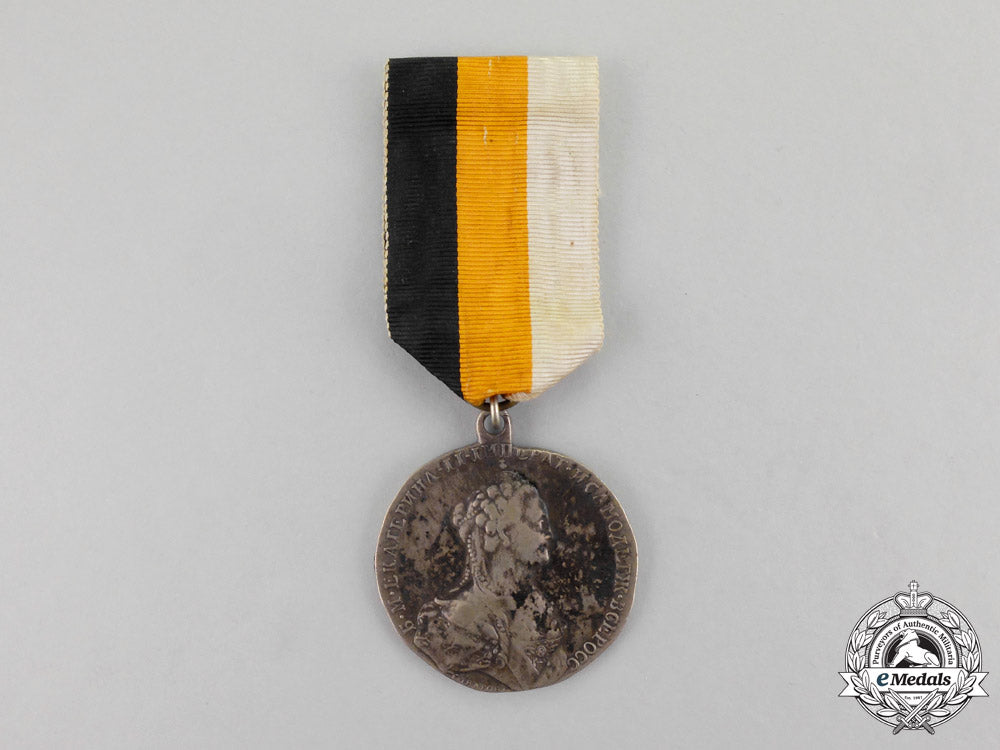
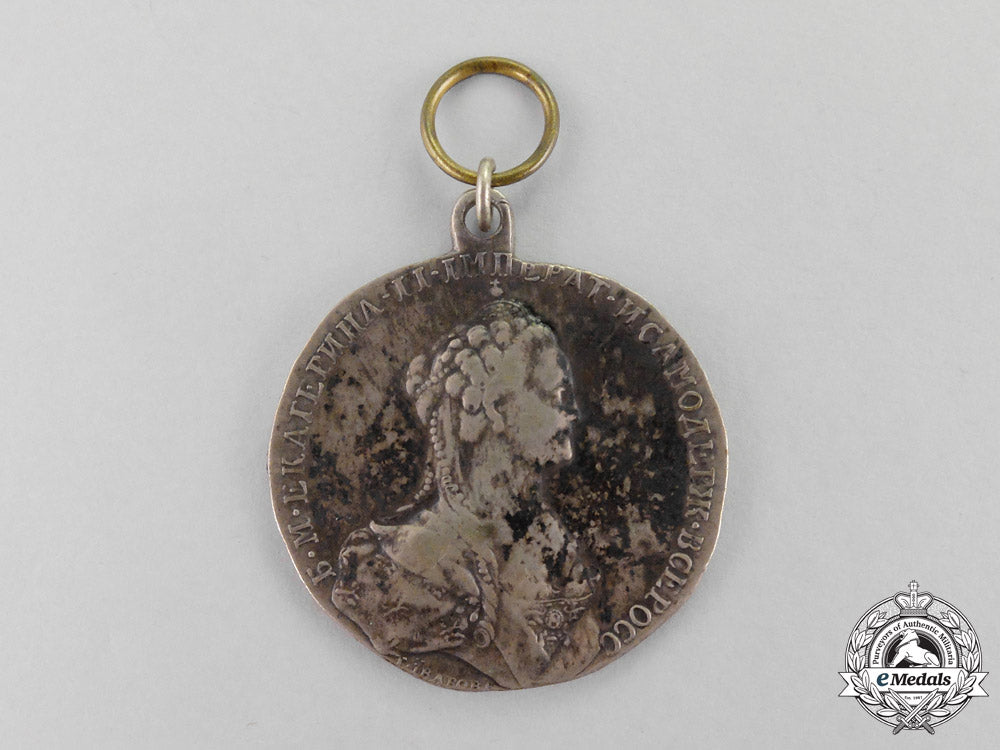
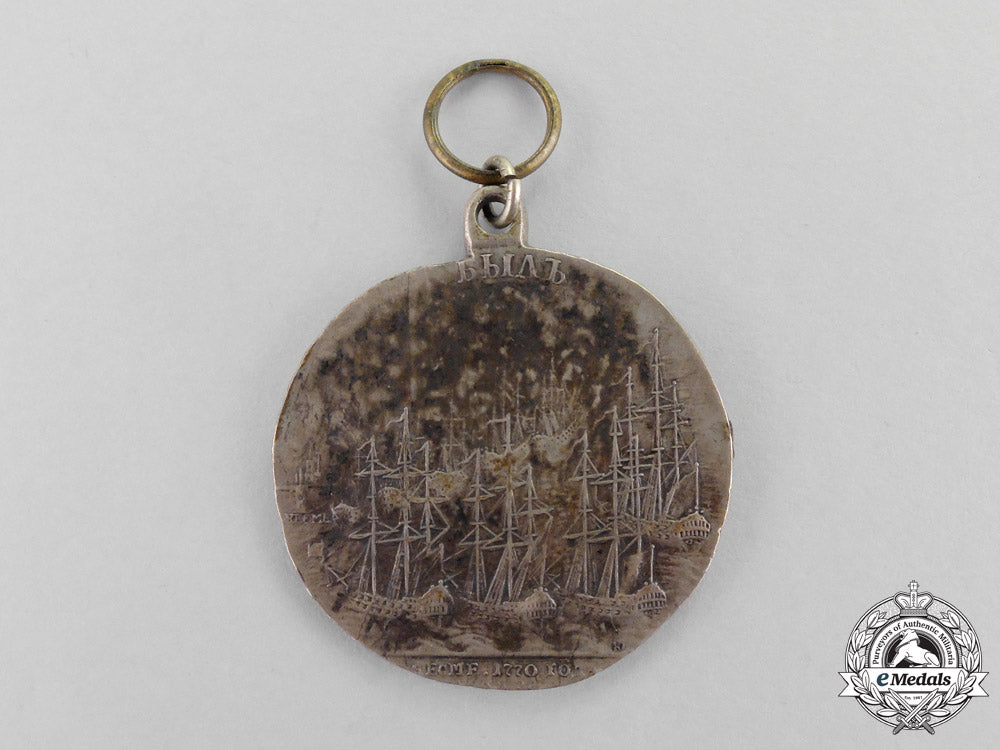
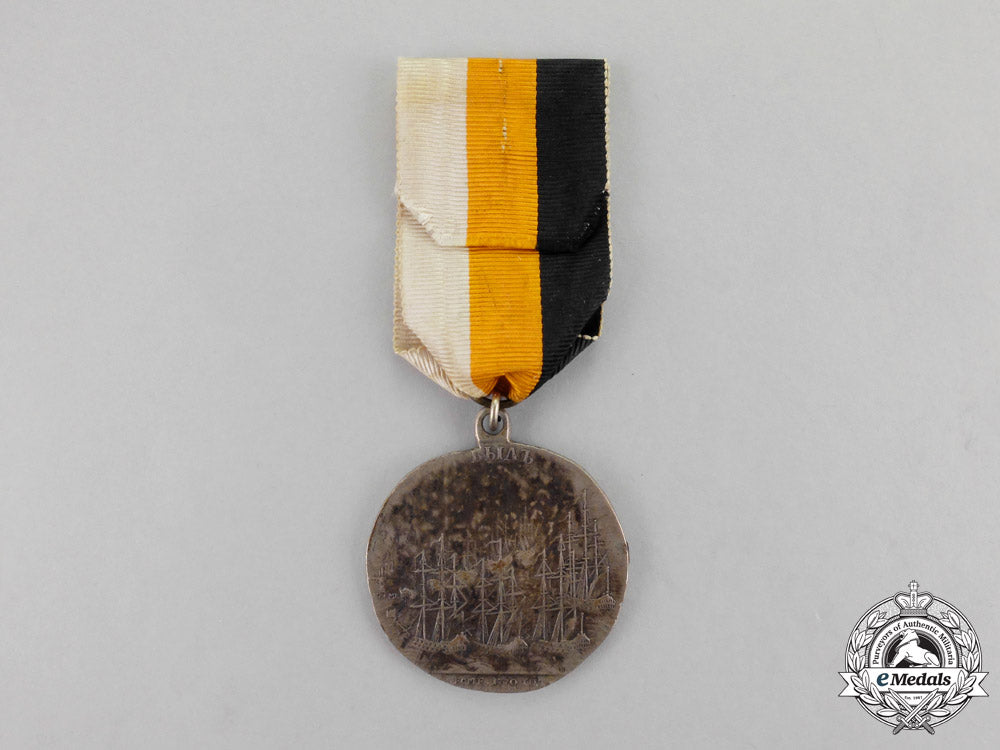
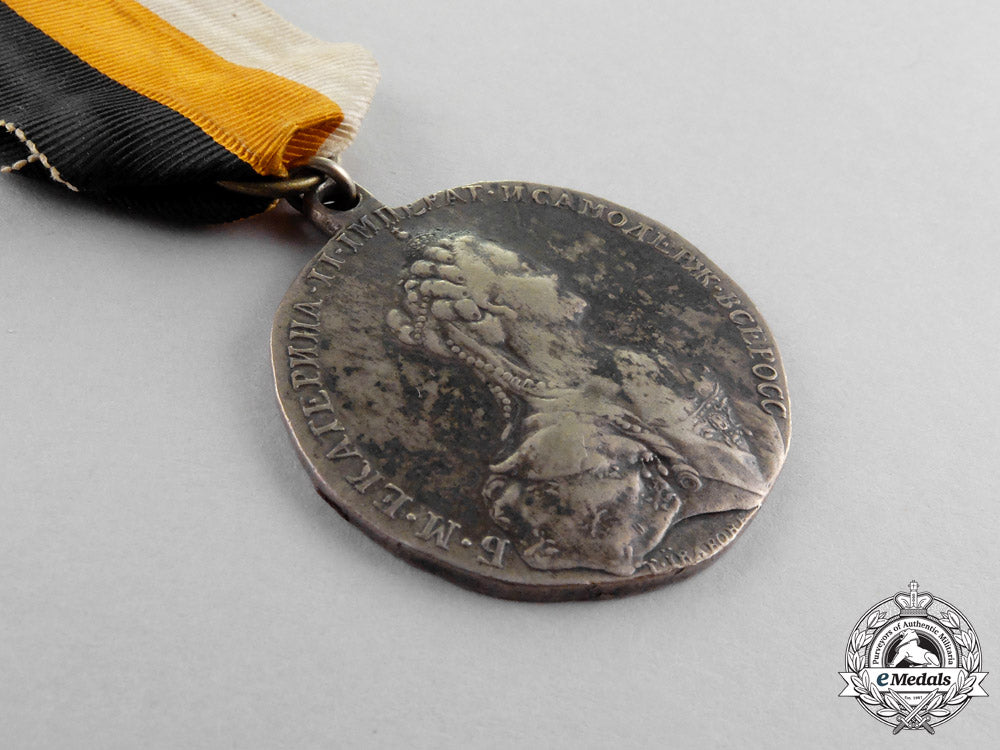
You May Also Like
Spain, Spanish State. A Medal of the Russian Campaign, with Case, by Diez y Campañia
EU24085
Austria-Hungary, Empire. A Rare Sturmbataillon 106 Personnel Badge
EU24086
France, Free Country Of Burgundy. An Order Of Saint George Of Burgundy, Embroidered Breast Star, C. 1925
EU19677
Russia, Imperial. A Russo-Japanese War Period Group Photograph, c. 1904–1910
EU23370
Finland, Republic. An Order Of The Cross Of Liberty, IV Class 1941, Military Division
EU24024
-
Spain, Spanish State. A Medal of the Russian Campaign, with Case, by Diez y Campañia
EU24085
Add to CartRegular price $340 USDRegular price $0 USD Sale price $340 USDUnit price / per -
Austria-Hungary, Empire. A Rare Sturmbataillon 106 Personnel Badge
EU24086
Add to CartRegular price $675 USDRegular price $0 USD Sale price $675 USDUnit price / per -
France, Free Country Of Burgundy. An Order Of Saint George Of Burgundy, Embroidered Breast Star, C. 1925
EU19677
Add to CartRegular price $330 USDRegular price $0 USD Sale price $330 USDUnit price / per -
Russia, Imperial. A Russo-Japanese War Period Group Photograph, c. 1904–1910
EU23370
Add to CartRegular price $340 USDRegular price $0 USD Sale price $340 USDUnit price / per -
Finland, Republic. An Order Of The Cross Of Liberty, IV Class 1941, Military Division
EU24024
Add to CartRegular price $200 USDRegular price $0 USD Sale price $200 USDUnit price / per
Do you have a similar item you are interested in selling?
Please complete the form and our client care representatives will contact you.
Sell Item